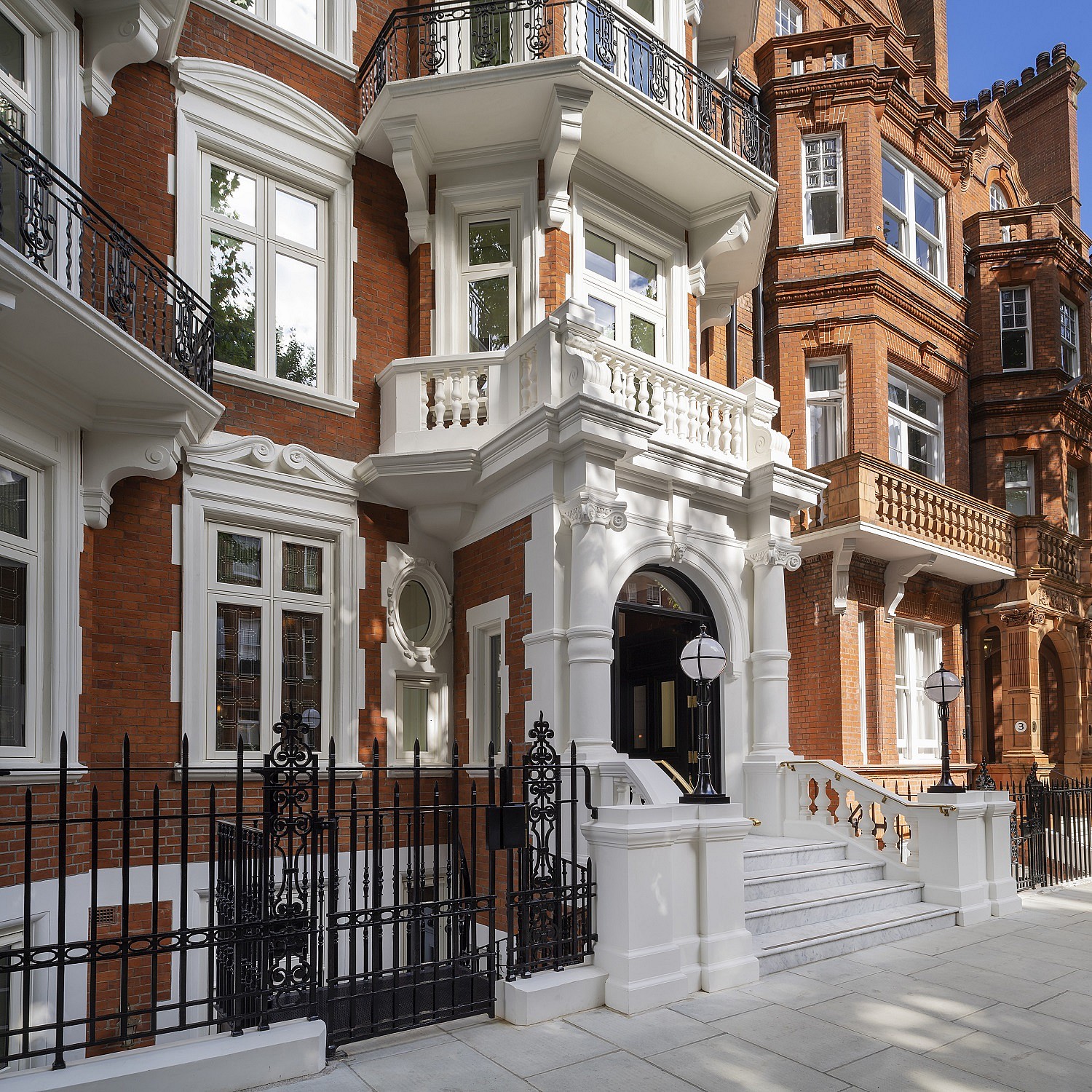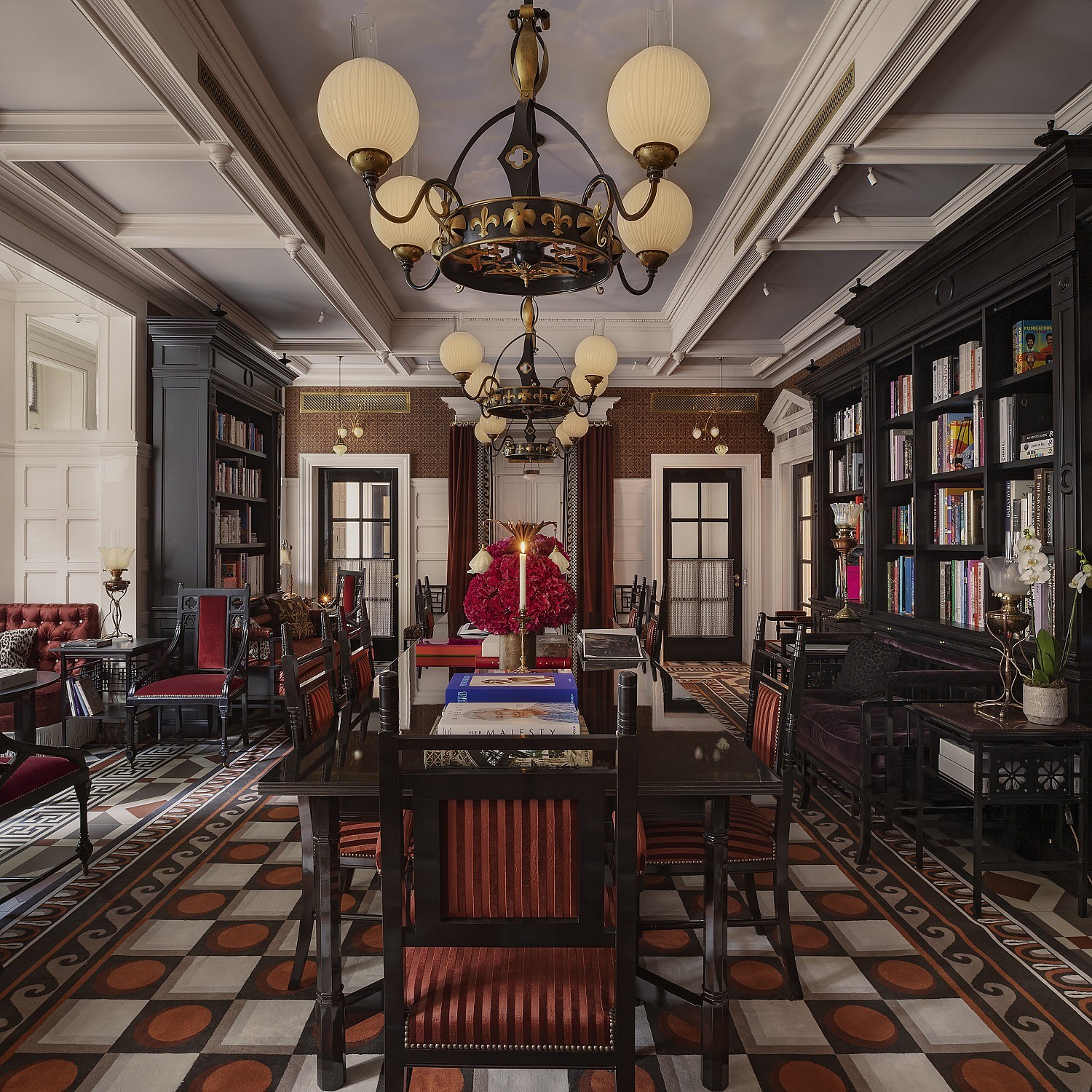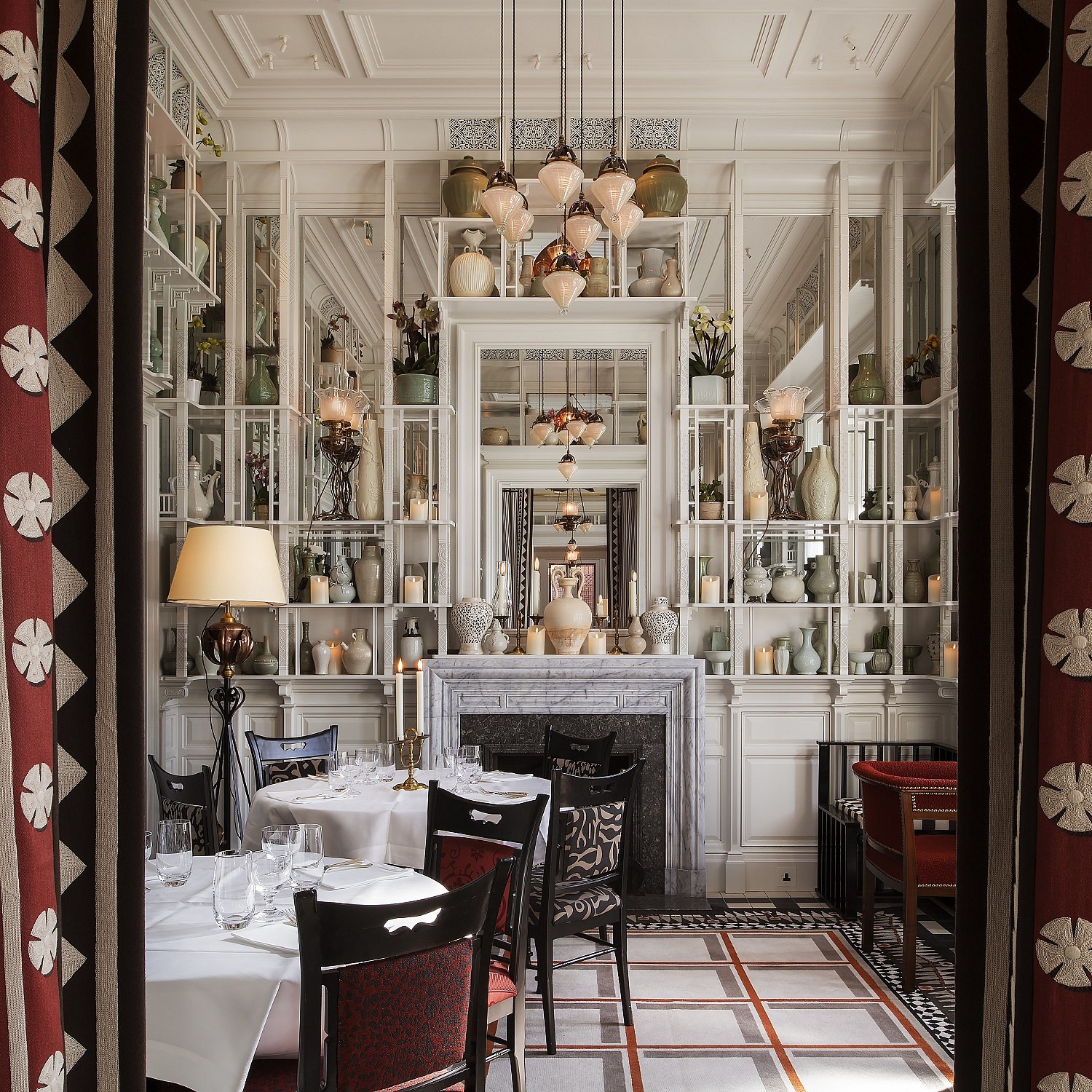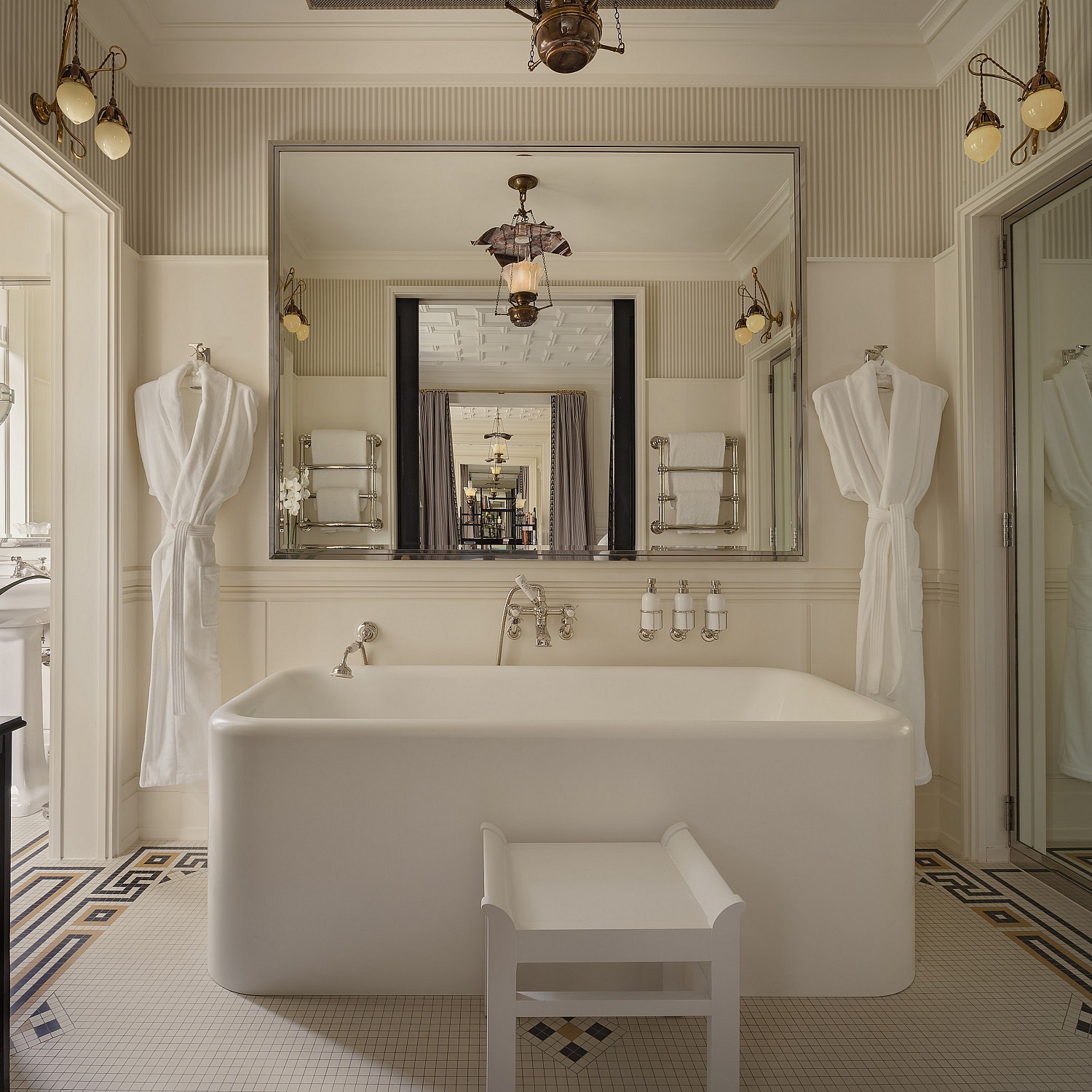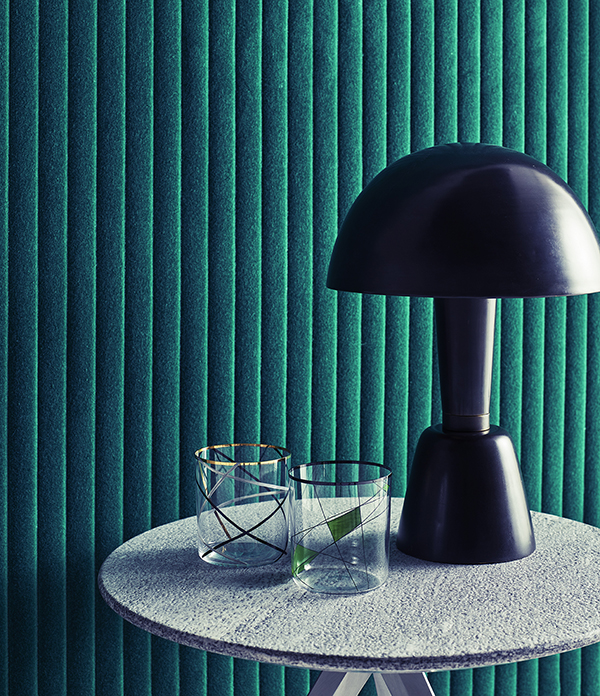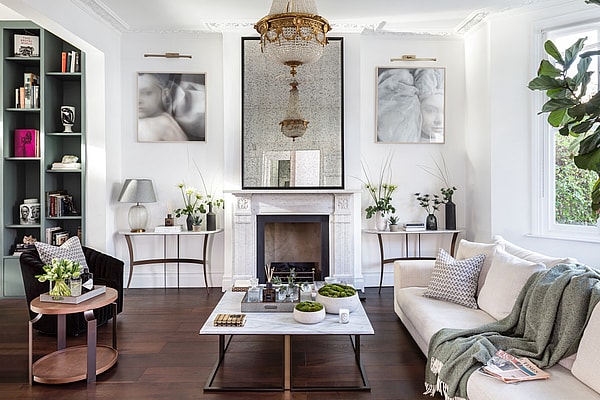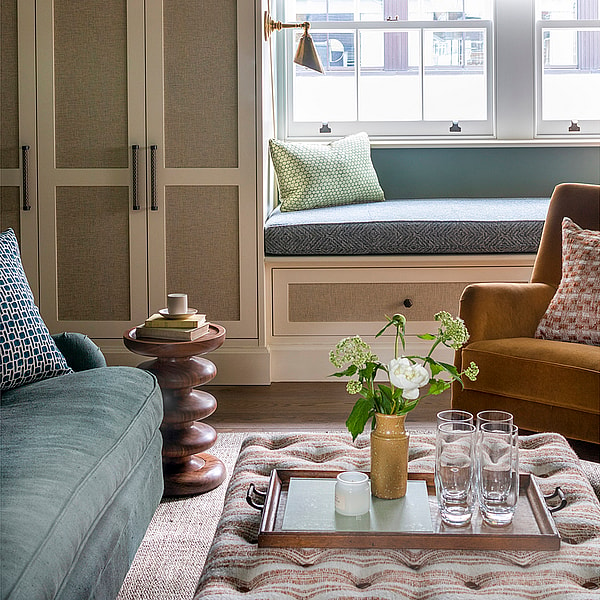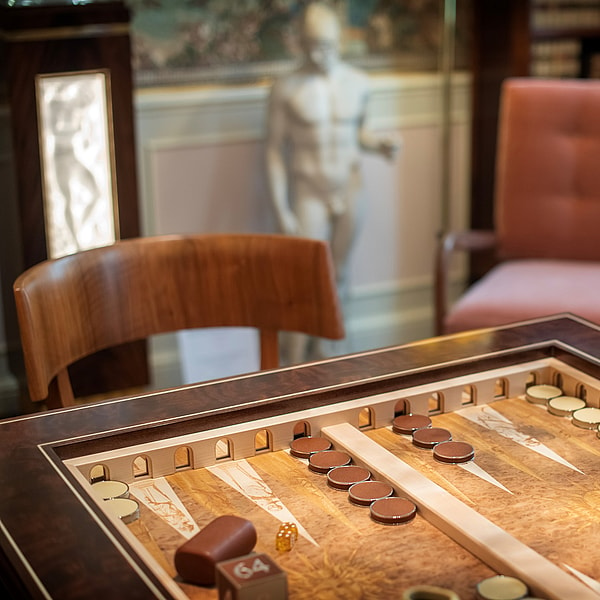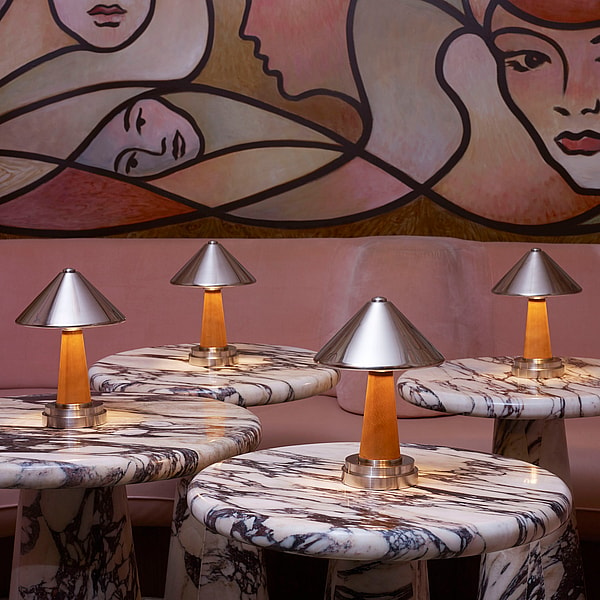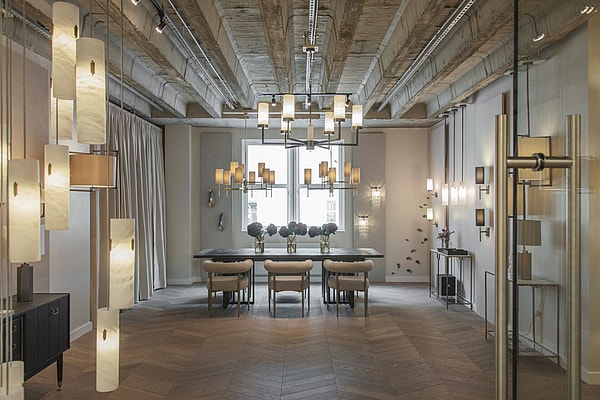Burning Bright
It may have a French interior designer in the shape of François-Joseph Graf, but new Chelsea hotel At Sloane is also steeped in British heritage and craftsmanship. Just 30 bedrooms and suites sit behind the handsome red brick facade at 1 Sloane Gardens, but every inch exudes a rich sense of history as well as luxurious comfort.
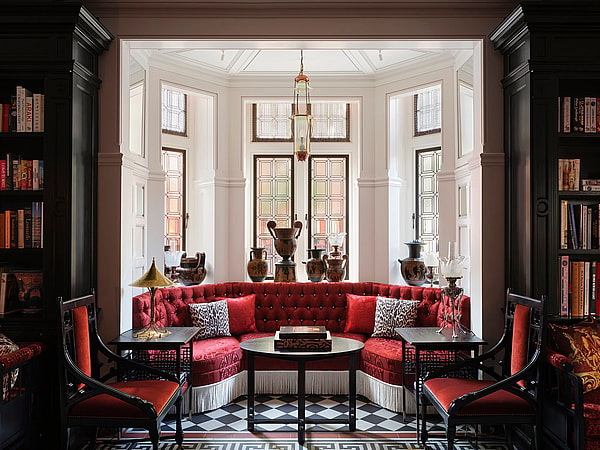
The lighting plays a key part in the creation of the hotel’s special atmosphere, and Graf worked with heritage lighting consultant Jeremy Quantrill, who in turn commissioned one of the most trusted names in his address book, Collier Webb, to create some of the hotel’s 700 lights. The project began in 2020 and has just been completed with the hotel’s opening in September 2023, so this was a major undertaking for Collier Webb, even though the company excels in this kind of bespoke work. “We specialise in taking the client’s vision and finding a way of remaking [older pieces] with today’s techniques and today’s technologies, giving them something back that looks like it is original from the time,” says Collier Webb’s design director David Arratoon.
“François-Joseph Graf had acquired a lot of original antique pieces by William Arthur Smith Benson, who was very much a part of the Arts & Crafts movement in the late 19th century,” says Arratoon. “We were given both images, and in some cases the original lighting itself both to restore and reproduce. That wasn’t too much of a challenge, since we make everything ourselves, using the same processes that would have been used to make the original pieces. It was more of a challenge to bring them up to today’s standards, and make sure they complied with regulations.” Most of these originals were first designed as oil lamps, so getting the bulbs right and concealing the wiring in a neat fashion were among the problems that the design team needed to solve.
Recreating a light from an existing object involves breaking it down as much as possible into its component parts, before making a three-dimensional CAD drawing: “This helps us to ensure that our manufacturing processes are going to work, but it’s also a good to communicate back to the client, so they see how it will work when it’s fully realised,” says Arratoon. Original components can be re-cast using the lost-wax method to preserve all the detail, but when recreating a piece only from a drawing, Collier Webb brings in the skill of its pattern maker, who makes a new model from clay, and then a mould is created, from which the finished brass piece can be cast. Specialists also gave the new pieces a patination that would mimic that of the antiques, to make sure that new was indistinguishable from old.
Much of Benson’s work is very ornate, with nature-inspired twisting abstract foliage, so it’s a tribute to the collective skill of the Collier Webb team that all the freshness and dynamism of the original designs have been preserved. Collier Webb also worked with a glass manufacturer to create the distinctive shades for each piece, many of which mimic Victorian vaseline glass – except they were made without the uranium that gave the originals their distinctive cloudy, light green/yellow appearance.
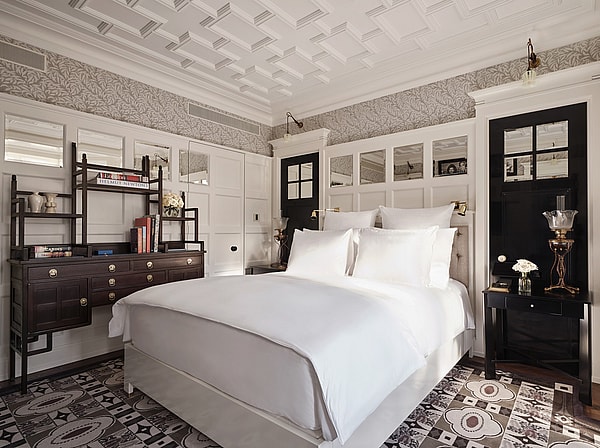
The final result is quite magical, with lights at every turn – flower-like ceiling pendants, smaller wall lights suspended on silk flexes that hang directly above tall, oversized doorways and ornate table lights with vase-like glass chimneys that would have originally acted as protection against the burning oil. Two more muscular-looking lamps stand sentry either side of the front door, their design conceived by Collier Webb as a more pared-back version of the lamps that could be seen in the original architect’s drawings. The lighting is also a perfect complement to Graf’s wider concept, with Arts & Crafts-inspired detailing, panelled walls, intricate ceiling cornices, William Morris wallpaper and clusters of Greek vases.
“It’s sympathetic to the building, but it’s done in a slightly more contemporary way,” says Arratoon of the project. “It’s fantastic what they’ve achieved” – but the same could be said for Collier Webb, too.


